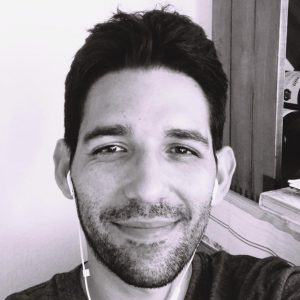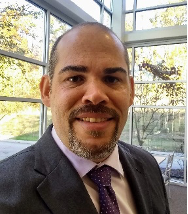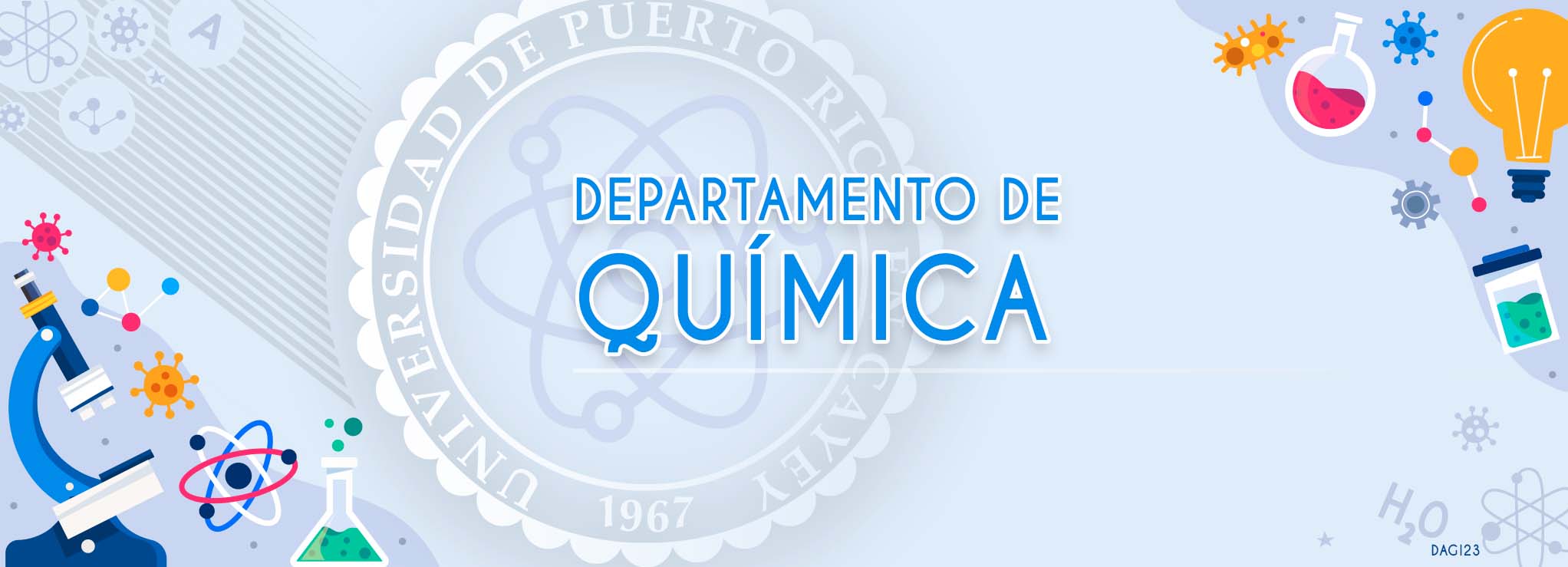
Departamento de Química
El Departamento de Química está adscrito al área de Ciencias Naturales. Dentro de la misión, metas y objetivos institucionales, el Departamento ofrece un programa de estudios conducente al grado de Bachillerato en Ciencias con concentración en Química. Además ofrece cursos para los otros programas en ciencias, para los estudiantes de Pedagogía y para la educación general del estudiantado.
Mensaje del director
El Departamento de Química desea crear conciencia en el estudiante del desarrollo científico y tecnológico de Puerto Rico, de los problemas que este desarrollo acarrea para la sociedad y el ambiente, y de la responsabilidad contraída con nuestro pueblo para contribuir a su desarrollo mediante el uso de la Química.
También desea el Departamento formar profesionales con una preparación integrada, que puedan apreciar la importancia y carácter cambiante de la Química como ciencia y su impacto social, económico y político en nuestro pueblo.
Estudiantes
El programa de estudios del Bachillerato en Ciencias con concentración en Química está diseñado para estudiantes que se preparan para 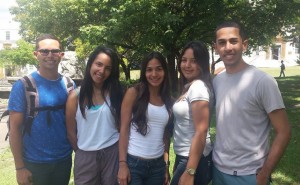 desempeñarse como químicos profesionales en la industria y en las agencias gubernamentales, o que desean proseguir estudios graduados en Química o en campos relacionados. Incluye 40 créditos en Química, los cuales llenan los requisitos necesarios exigidos por la Junta Examinadora de Químicos de Puerto Rico para obtener la licencia de químico. Como de parte de sus ofrecimientos fomenta la investigación a nivel subgraduado.
desempeñarse como químicos profesionales en la industria y en las agencias gubernamentales, o que desean proseguir estudios graduados en Química o en campos relacionados. Incluye 40 créditos en Química, los cuales llenan los requisitos necesarios exigidos por la Junta Examinadora de Químicos de Puerto Rico para obtener la licencia de químico. Como de parte de sus ofrecimientos fomenta la investigación a nivel subgraduado.
Información de Contacto
Dirección Física:
Oficina 338, Edificio NEC
Telefonos:
787-738-2161 Extensiones 3033, 3383
Correo Electrónico:
quimica.cayey@upr.edu
Personal Administrativo
Técnicos de laboratorio:
Nelson Granda
Felian Velazquez
Secretaria:Iralis Hernández
iralis.hernandez@upr.edu
- Dr. Dalvin D. Méndez Hernández (Director Interino)
- Dr. Wilfredo Resto Otero
- Dra. Alejandra Cruz Montañez
- Dra. Elba D. Reyes
- Dr. Juan A. Santana
- Dr. Luis M. Negrón
- Dra. Luz E. Torres
- Dra. Mayra Pagán Ortiz
- Prof. Nelson Granda Paz
- Dr. Raúl J. Castro
- Dra. Ruth B Pietri Meléndez
- Dra. Vibha Bansal
- Dra. Zulma García
E-mail: dalvin.mendez@upr.edu
Webpage: https://scholar.google.com/citations?user=DDBLEy8AAAAJ&hl=en
Courses: QUIM3131, QUIM3132, QUIM4041, QUIM4042, QUIM4101, QUIM 4102, QUIM4166, QUIM4999, INTD4996
Education:
Bachelor: Universidad Metropolitana, 2008
Doctoral: Arizona State University, 2014
Honor and awards: NSF MIE fellow (2004 – 2008)
NSF GRFP fellow (2010 – 2013)
Professional Affiliations: American Chemical Society
Research Focus (Summary):
The research performed at my lab focuses in the computational design of molecules for solar energy or biomedical applications. We use computational chemistry to predict physical properties of new molecules in order to determine which ones will improve the efficiency of a solar cell or be capable to react with reactive oxygen species in aqueous solutions. One of the physical properties that we study is the reduction potential of a molecule. The reduction potentials of two reacting molecules can be used to predict if the reaction is spontaneous or not. By calculating the reduction potential of a new molecules one can save time and energy in the synthesis and characterization of molecules that would not be adequate to perform the reaction of interest. Other physical properties that we investigate are spectroscopic absorption and emission energies of organic molecules and electron transfer rates between donor and acceptor sites.
Publications:
- S. Chaudhuri, S. Hedström, D. D. Méndez-Hernández, H. P. Hendrickson, K. A. Jung, and V. S. Batista*, First-principles predictions of electron transfer rates. (2017, DOI: 10.1021/acs.jctc.7b00513).
- D. D. Méndez-Hernández, J. Ho, E. Kish, K. WongCarter, S. Pillai, G. Kodis, J. Niklas, O. G. Poluektov, D. Gust, T. A. Moore, A. L. Moore, V. S. Batista*, B. Robert*, Triplet-triplet Energy Transfer in Artificial and Natural Photosynthetic Antennas. (2017, DOI: 10.1073/pnas.1614857114).
- D. Finkelstein-Shapiro, M. Fournier, D. D. Méndez-Hernández, C. Guo, M. Calatayud, T. A. Moore, A. L. Moore, D. Gust and J. L. Yargera, Understanding iridium oxide nanoparticle surface sites by their interaction with catechol. (2017, DOI: 10.1039/C7CP01516J)
- J. R. Swierk, D. D. Méndez-Hernández, N. S. McCool, P. Liddell, Y. Terazono, I. Pahk, J. J. Tomlin, N. V. Oster, T. A. Moore, A. L. Moore, D. Gust, T. E. Mallouk*, Metal-free organic sensitizers for use in water-splitting dye-sensitized photoelectrochemical cells, Proceedings of the National Academy of Sciences (2015; DOI: 10.1073/pnas.1414901112).
- D. D. Méndez-Hernández*, J. G. Gillmore*, L. A. Montano, T. A. Moore, D. Gust, A. L. Moore, V. Mujica. Building and testing correlations for the estimation of one-electron reduction potentials of adiverse set of organic molecules, Journal of Physical Organic Chemistry (2015; DOI:10.1002/poc.3413).
- J. D. Megiatto, Jr., D. D. Méndez-Hernández, M. E. Tejeda-Ferrari, A. Teillout, M. J. Llansola Portolés, G. Kodis, O. G. Poluektov, T. Rajh, V. Mujica, T. L. Groy, D. Gust, T. A. Moore and A. L. Moore*. A bioinspired redox relay that mimics radical interactions of the Tyr-His pairs of photosystem II, Nature Chemistry (2014; DOI: 10.1038/nchem.1862).
- D. D. Méndez-Hernández*, P. Tarakeshwar, D. Gust, T.A. Moore, A.L. Moore and V. Mujica. Simple and accurate correlation of experimental redox potentials and DFT-calculated HOMO/LUMO energies of polycyclic aromatic hydrocarbons, Journal of Molecular Modeling (2013; DOI: 10.1007/s00894-012-1694-7).
Catedrático Química Analítica/Instrumental, wilfredo.resto@upr.edu, Oficina 108-Rectoría, Extensión 3033, 2706 ó 2578
Office Address: 103F-NEC
Phone: (787) 738-2161, ext. 3376
E-mail: alejandra.cruzmontanez@upr.edu
Courses:
QUIM 3121, QUIM 3122, QUIM 3123, QUIM 3124
Education
Bachelor: University of Puerto Rico, Río Piedras Campus, B.Sc. in Chemistry (2007)
Doctoral: University of Puerto Rico, Río Piedras Campus, Ph.D. in Chemistry (2017)
Honors and Awards
- Research Initiative for Scientific Enhancement (NIH-RISE) Fellowship, 2009 – 2014
- Research Initiative for Scientific Enhancement (NIH-RISE) Fellowship, 2006 – 2007
Publications
- Cruz-Montañez, A.; Morales-Rivera, K.F.; Torres, W.; Valentín, E.M.; Rentas, J.; Prieto, J.A. Reiterative epoxide-based strategies for the synthesis of stereo-n-ads and application to polypropionate synthesis. A personal account. Chim. Acta 2017, 468, 28-37.
- Morales-Cruz, M.; Cruz-Montañez, A.; Figueroa, C.M.; González, T.; Davila, J.; Inyushin, M.; Loza-Rosas, S.; Molina, A.; Muñoz-Perez, L.; Kucheryavykh, L.; Tinoco, A.; Griebenow, K. Combining stimulus-triggered release and active targeting strategies improves cytotoxicity of cytochrome c nanoparticles in tumor cells. Pharm. 2016, 13, 2844-2854.
- Cruz-Montanez, A.; Piñero Cruz, D.A.; Prieto, J.A. Crystal structure of (-)-(2R,3S,4R,5R)-5-(1,3-dithian-2-yl)-3- methyl-1-(triisopropylsilyloxy)hexane-2,4-diol. Cryst. 2014, 70, 1285-1286.
- Zou, Y.; Young, D.D.; Cruz-Montanez, A.; Deiters, A. Synthesis of Anthracene and Azaanthracene Fluorophores via [2+2+2] Cyclotrimerization Reactions. Lett. 2008, 10, 4661-4664.
Catedrática, Química Orgánica / elba.reyes@upr.edu / Oficina 323MMM / Extensión 2531 / Química Orgánica 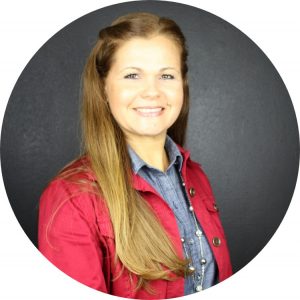
Phone: (787) 738-2161, ext. 2077
Fax: N/A
E-mail: juan.santana6@upr.edu
Webpage:
https://scholar.google.com.pr/citations?user=yxsq-RAAAAAJ&hl=en
https://www.researchgate.net/profile/Juan_Santana4
Courses: QUIM3131 – QUIM3134, QUIM4041-4042, QUIM4166, QUIM4999, INTD4996
Education
Bachelor/Master: University of the Sacred Heart, Puerto Rico, USA, B.S. in Chemistry (2005)
Doctoral: University of Puerto Rico, Puerto Rico, USA, Ph.D. in Chemistry (2010)
Honors and Awards
Alexander von Humboldt Foundation Postdoctoral Fellowship, 2010 – 2012
NSF-EPSCoR Institute for Functional Nanomaterials (IFN) Fellowship, 2009 – 2010
Professional Affiliations
American Chemical Society
American Physical Society
Research Focus (Summary)
Our group employs Computational Science Techniques to study the properties of matter. These techniques are employed, instead of experimental methods, because our research projects seek to understand the atomic level structural, energetic and electronic properties of matter. To study such properties with experimental methods, sophisticated and expensive microscopic and spectroscopic characterization instruments are necessary. However, such properties are easily determined if the Quantum Mechanical equations describing such system can be solved. Solving such equation is not a trivial task and it requires various physical approximations and advanced computational techniques. Currently, we are working on three research areas: i) Atomic data for astrophysical applications, ii) Surface catalysis for energy applications, and iii) Exploring complex materials with diffusion quantum Monte Carlo.
Publications
- DFT Calculations of the Adsorption States of O2 on OH/H2O-Covered Pt(111), J. A. Santana, Electrocatalysis (2020). https://doi.org/10.1007/s12678-020-00619-6
- Strain and Low-Coordination on Monolayer Nanoislands of Pd and Pt on Au(111): A Comparative Analysis Based on Density Functional Results, J. A. Santana, B. Cruz, J. Melendez-Rivera, and Notker Rösch, J. Phys. Chem. C (2020), 124, 13225. https://pubs.acs.org/doi/10.1021/acs.jpcc.0c03151
- DFT and Thermodynamics Calculations of Surface Cation Release in LiCoO2, J. W. Bennett, D. T. Jones, N. Cartagena-Gonzalez, Z. R. Jones, E D. Laudadio, R. Hamers, J. A. Santana, S. E. Mason, Applied Surface Science (2019), 515, 145865. https://doi.org/10.1016/j.apsusc.2020.145865
- Linear correlation models for the redox potential of organic molecules in aqueous solutions, J. C. Ortiz-Rodríguez, J. A. Santana and D. D. Méndez-Hernández, J. Molecular Modeling, (2019) 26, 70. https://link.springer.com/article/10.1007/s00894-020-4331-x
- Relativistic MR-MP energy levels for K-like Fe, J. A. Santana, Y. Ishikawa, P. Beiersdorfer, Astrophys J. Suppl. S., (2020) 247, 52. https://doi.org/10.3847/1538-4365/ab76c7
- Electron confinement and magnetism of (LaTiO3)1/(SrTiO3)5 heterostructure: A diffusion quantum Monte Carlo study, J. A. Santana, J. T. Krogel, S. Okamoto, and F. A. Reboredo, J. Chem. Theory Comput. (2019) 16, 643. https://pubs.acs.org/doi/10.1021/acs.jctc.9b00678
- DFT calculations of the electrochemical adsorption of sulfuric acid anions on the Pt(110) and Pt(100) surfaces, J. A. Santana and Y. Ishikawa, Electrocatalysis, (2019), 11, 86. https://link.springer.com/article/10.1007/s12678-019-00574-x
- Relativistic MR-MP energy levels for L-Shell Ions of Iron, J. A. Santana, E. Peña, E. J. Morales-Butler, P. Beiersdorfer, G. Brown, Astrophys J. Suppl. S., 245 (2019) 9. https://doi.org/10.3847/1538-4365/ab4c3d
- Adsorption and Diffusion of Sulfur on the (111), (100), (110) and (211) Surfaces of FCC Metals: Density Functional Theory Calculations, C. B. Rodríguez, J. A. Santana, J. Chem. Phys. 149 (2018) 204701. https://doi.org/10.1063/1.5063464
- Diffusion quantum Monte Carlo and density functional calculations of the structural stability of bilayer arsenene, Yelda Kadioglu, J. A. Santana, H. D. Özaydin, F. Ersan, O. Ü. Aktürk, E. Aktürk, F. A. Reboredo, J. Chem. Phys. 148, 214706 (2018). https://doi.org/10.1063/1.5026120
- Relativistic MR-MP energy levels for L-Shell Ions of Sulfur and Argon, J. A. Santana, N. A. Lopez-Dauphin, E. J. Morales-Butler, P. Beiersdorfer, Astrophys J. Suppl. S., 238 (2018) 34. https://doi.org/10.3847/1538-4365/aae14e
- Intercombination Transitions in the n = 4 Shell of Zn-, Ga-, and Ge-Like Ions of Elements Kr through Xe, Elmar Träbert, J. A. Santana, Pascal Quinet and Patrick Palmeri, Atoms 2018, 6 (3), 40. https://doi.org/10.3390/atoms6030040
- Relativistic MR-MP energy levels for L-Shell Ions of Silicon, J. A. Santana, N. A. Lopez-Dauphin, P. Beiersdorfer, Astrophys J. Suppl. S., 234 (2018) 13. https://doi.org/10.3847/1538-4365/aa94d2
Office Address:
Natural Sciences Building (NEC-103B)
Phone: (787) 738-2161, ext. 3375
E-mail: luis.negron11@upr.edu
Webpage: https://negronresearchgroup.org/
Courses: QUIM3121 – QUIM3123, QUIM 3122-QUIM 3124
Education
Ph. D. in Chemistry, University of Puerto Rico at Rio Piedras, 2014
Bachelor of Science in Natural Sciences, University of Puerto Rico at Rio Piedras, 2008
College of Chemists from Puerto Rico Licensure, #6048, 2016
Honors and Awards
Research Initiative for Scientific Enhancement Fellowship Award, 2010-2014
Alfred Sloan Award, Alfred Sloan Foundation, 2009
PATENT
– Negrón, Luis M.; Rivera, José M.; Supramolecular Hacky Sacks, Method of Synthesis and Applications Thereof, Appl. No.: 62/020,589, Filed: Jul. 3, 2014. (Non-provisional application)
Professional Affiliations
American Chemical Society (ACS)
Colegio de Químicos de P.R
Research Focus (Summary)
Our research group focus in the synthesis and study of organic molecules called lipid dendrimers that by self-assembly can form supramolecular nanoparticles for drug-delivery applications. We are interested in understanding how lipid dendrimers can form these nanoparticles in order to develop a new alternative for therapeutic agents for cancer treatment. Our group apply concepts of organic chemistry (synthesis and characterization), analytical chemistry, nanotechnology, supramolecular chemistry among other interdisciplinary areas.
Publications
1) Negrón, Luis M.; Diaz Tanya L.; Ortiz, Edwin O.; Dieppa, Diómedes.; Madera, Bismark.; Rivera, José M.; Organic nanoflowers from a Wide Variety of Molecules Templated by a Hierarchical Supramolecular Scaffold. Langmuir. 2016, 32 (10), 2283-2990. DOI: 10.1021/acs.langmuir.5b03946.
2) Negrón, Luis M.; Meléndez-Contés, Yazmary.; Rivera, José M.; Patchy Supramolecules as Versatile Tools To Probe Hydrophobicity in Nanoglobular Systems. J. Am. Chem. Soc. 2013,135 (10), 3815-3817. DOI: 10.1021/ja401373h.
Phone: 787-738-2161 2268
E-Mail: luz.torres@upr.edu
Courses: Química Orgánica – QUIM-3152
Education:
a. Bachelor: B.Sc. in Chemistry, University of Puerto Rico, Río Piedras, P.R.
b. Doctoral: Ph.D. in Chemistry, University of Puerto Rico, Río Piedras, P.R.
Honor and awards:
a. Cum Laude, B.Sc, In Chemistry
MARC Honor Undergraduate Research
Program, August 1981-July 1984
b. NSF Fellow, August 1983-May 1984
c. MARC Predoctoral Fellow,
June 1984-May 1986
Professional Affiliations: American Chemical Society
Catedrática, Química Orgánica / mayra.pagan@upr.edu / Oficina 307MMM / Extensión 2251 / Química Orgánica
Química General,/Lab. Química General / nelson.granda1@upr.edu / Oficina 126F-NEC / Extensión 3110 / Química Analítica
Catedrático, Química Analítica/Química General, raul.castro@upr.edu, Oficina 322MMM, Extensión 2625 ó 2116
Phone: x2375
E-mail: ruth.pietri@upr.edu
Courses: Quim 3131, Quim 3132, Quim 3133, Quim 3134. Quim 4065 and Quim 4066
Education:
- Bachelor/Master: Name of the university and year of graduation: UPR-Mayaguez, 2000 (MS, Chemistry)
- Doctoral: Name of the university and year of graduation: UPR-Mayaguez. 2009 (PhD, Biophysics)
Honors and Awards
- PR-INBRE Travel Award (2017)
- DOE Visiting Faculty Program (2017)
- PR-INBRE Instrument Award (2016)
- BNL Virginia Pond Scholarship Program (2014)
- Young PR Scientist IUPAC 2011 World Chemistry Congress Award (2011)
- Central New York to Puerto Rico-Mayaguez Alliance for Graduate Education and the Professoriate Fellowship (CNY-PR AGEP) (2005)
- Alfred P. Sloan Foundation Fellowship (NACME) (2004)
- Recognition award for the contribution to the technical bulletin stock management system. Chemical Research and Application Department, Shell Development Co. (1993)
- Recognition award for the contribution to the large-scale wiped film evaporator (WFE) run in the Chemical Research and Application Department, Shell Development Co. (1993)
Professional Affiliations: ACS
Research Focus (Summary)
Alzheimer (AD) and Parkinson diseases (PD) are progressive neurodegenerative disorders, affecting neurons and ultimately leading to death. Oxidative stress produced by reactive oxygen species (ROS) is an important player in the pathogenesis and progression of these diseases. Consequently, new approaches to stop oxidative stress induced by ROS are needed. Interestingly, H2S may stop oxidative damage in AD and PD by modulating the activities of enzymes involved in ROS consumption and production via protein sulfhydration. Sulfhydration is a novel posttranslational modification in which H2S and other sulfide oxidation products (H2Sx and HS radical) attach to free cysteine thiols and disulfides in proteins, which then lead to either activation or inhibition of protein activity. Our research is focused at elucidating the chemical and structural aspects of sulfhydration in anti-oxidant and pro-oxidant enzymes associated with ROS and hence, AD and PD. In particular, the project is aimed at defining: (1) the reactive species involved in protein sulfhydration; (2) the chemical structure of the sulfhydrated product, and (3) the overall structural changes associated with protein sulfhydration.
We use kinetics to determine the affinity of the reactants involved in sulfhydration. Infrared and circular dichroism spectroscopy techniques are also used to study the structural changes of the proteins after sulfhydration. Likewise, synchrotron radiation techniques like X-ray scattering and X-ray absorption spectroscopy are employed to understand chemical and global changes after protein sulfhydration.
Office Address: MMM-306 (O), MMM-300 (L) 
Phone: 2373 (O), 2370 (L)
E-mail: vibha.bansal@upr.edu
Courses:
- General Biochemistry (Quim 4065)
- General Biochemistry Laboratory (Quim 4066)
- General Chemistry-I Laboratory (Quim 3133)
- General Chemistry-II Laboratory (Quim 3134)
- Undergraduate Research (Quim 4999)
Education
- B.Sc. (Biochemistry Honors) 1998. Panjab University, Chandigarh, India
- M.Sc. (Biochemistry Honors) 2000. Panjab University, Chandigarh, India
- Ph.D. (Biochemical Engineering and Biotechnology) 2006. Indian Institute of Technology, New Delhi, India
- Post-Doctoral associate. 2005-2007. Dept. of Chemistry, UPR-Humacao, Puerto Rico.
Honors and Awards
- SIDA research fellowship for research visit to Lund University, Sweden in 2004.
- National Research Fellowship from CSIR (NET 2000).
- University Gold Medal (M.Sc., 2000)
- National Merit Scholarship (1998-2000).
- University Gold Medal (B.Sc., 1998)
Professional Affiliations: American Chemical Society
Research Focus (Summary): Our lab works in two different areas:
- Protein Engineering: This project involves engineering the thrombolytic protein, tissue-type plasminogen activator to improve its fibrinolytic properties. We have already engineered several mutants and expressed them in E.coli. The characterization of the mutant proteins is now in progress. Through this study we also aim to establish a better understanding of the structure-function relationships for these proteins. Collaborators: Dr. Saurabh Chattopadhyay (University of Toledo, OH), Dr. Tim A Whitehead (MSU, MI).
- Bioseparations: This project involves the development of affinity membranes for protein isolation. In collaboration with a multidisciplinary team of researchers, we are synthesizing regenerated cellulose membranes, modifying them chemically to impart affinity for a specific protein, and then testing their protein binding capacity and selectivity.
Collaborators: Dr. Ezio Fasoli (UPR-Humacao), Dr. Ivan Dmochowski (UPenn), Dr. Jose Sotero (UPR-Humacao)
Publications:
- Bansal V, Kumar A, Roychoudhury PK, Mattiasson B. 2006. Recovery of urokinase from integrated mammalian cell culture cryogel bioreactor and purification of the enzyme using p-aminobenzamidine affinity chromatography. J Mol Recog 19 (4): 332-339.
- Bansal V, Roychoudhury PK. 2006. Production and purification of urokinase: A comprehensive review. Protein Express Purif 45: 1-14.
- Kumar A, Bansal V, Andersson J, Roychoudhury PK, Mattiasson B. 2006. Supermacroporous cryogel matrix for integrated protein isolation: IMAC purification of urokinase from cell culture broth of human kidney cell line. J Chromatogr A 1103: 35-42.
- Kumar A, Bansal V, Nandakumar KS, Galaev IY, Roychoudhury PK, Holmdahl R, Mattiasson B. 2006. Integrated bioprocess for the production and isolation of urokinase from animal cell culture using supermacroporous cryogel matrices. Biotechnol Bioeng 93 (4): 636-646.
- Castillo J, Bansal V, Ganesan A, Halling P, Secundo F, Ferrer A, Griebenow K, Barletta G. 2006. On the activity loss of hydrolases in organic solvents: II. A mechanistic study of subtilisin Carlsberg. BMC Biotechnol 6: 51-63.
- Bansal V, Roychoudhury PK, Kumar A. 2007. Urokinase separation from cell culture broth of a human kidney cell line. Int J Biol Sci 3 (1): 64-70.
- Bansal V, Delgado Y, Fasoli E, Ferrer A, Griebenow K, Secundo F, Barletta G. 2010. Effect of prolonged exposure to organic solvents on the active site environment of subtilisin Carlsberg. J Mol Catal B: Enzymatic 64: 38-44.
- Zha XQ, Pan LH, Luo, JP, Wang JH, Wei P, Bansal V. 2012. Enzymatic fingerprints of polysaccharides of Dendrobium officinale and their application in identification of Dendrobium species. J Nat Med 66:525–534.
- Bansal V, Delgado Y, Legault, M, Barletta G. 2012. Low enzyme operational stability in dry organic solvents: changing environment of the active site. Molecules 17(2): 1870-1882.
- Fasoli E, Ruiz Reyes Y, Martinez Guzman O, Rosado A, Rodriguez Cruz V, Borges A, Martinez E, Bansal V. 2013. Para-aminobenzamidine linked regenerated cellulose membranes for plasminogen activator purification: Effect of spacer arm length and ligand density. J Chromatogr B 930(1): 13-21.
- Zha X, Diaz R, Franco JJR, Sanchez VF, Fasoli E, Barletta G, Carvajal A, Bansal V. 2013. Inhibitors of urokinase type plasminogen activator and cytostatic activity from crude plants extracts. Molecules 18(8): 8945-8958.
- Zha XQ, Zhao HW, Bansal V, Pan LH, Wang ZM, Luo JP. 2014. Immunoregulatory activities of Dendrobium huoshanense polysaccharides in mouse intestine, spleen and liver. Int J Biol Macromol. 64:377-382.
- Zhang HL, Cui SH, Zha XQ, Bansal V, Xue L, Li XL, Hao R, Pan LH, Luo JP. 2014. Jellyfish skin polysaccharides: Extraction and inhibitory activity on macrophage-derived foam cell formation. 2014. Carbohydrate Polymers 106: 393–402.
Book Chapter
- Fasoli E and Bansal V. Targeting Plasminogen Activator System in Cancer Treatment. In: Plasminogen Activator: Genetic Factors, Functions and Clinical Applications (2014), Ed. Rutherford J. M., Nova Science Publishers, Hauppauge, NY (USA).
Catedrática Auxiliar, Química Analítica/Lab Química General/Seminario, zulma.garcia@upr.edu, Oficina 317-B MMM, Extensión 3033


